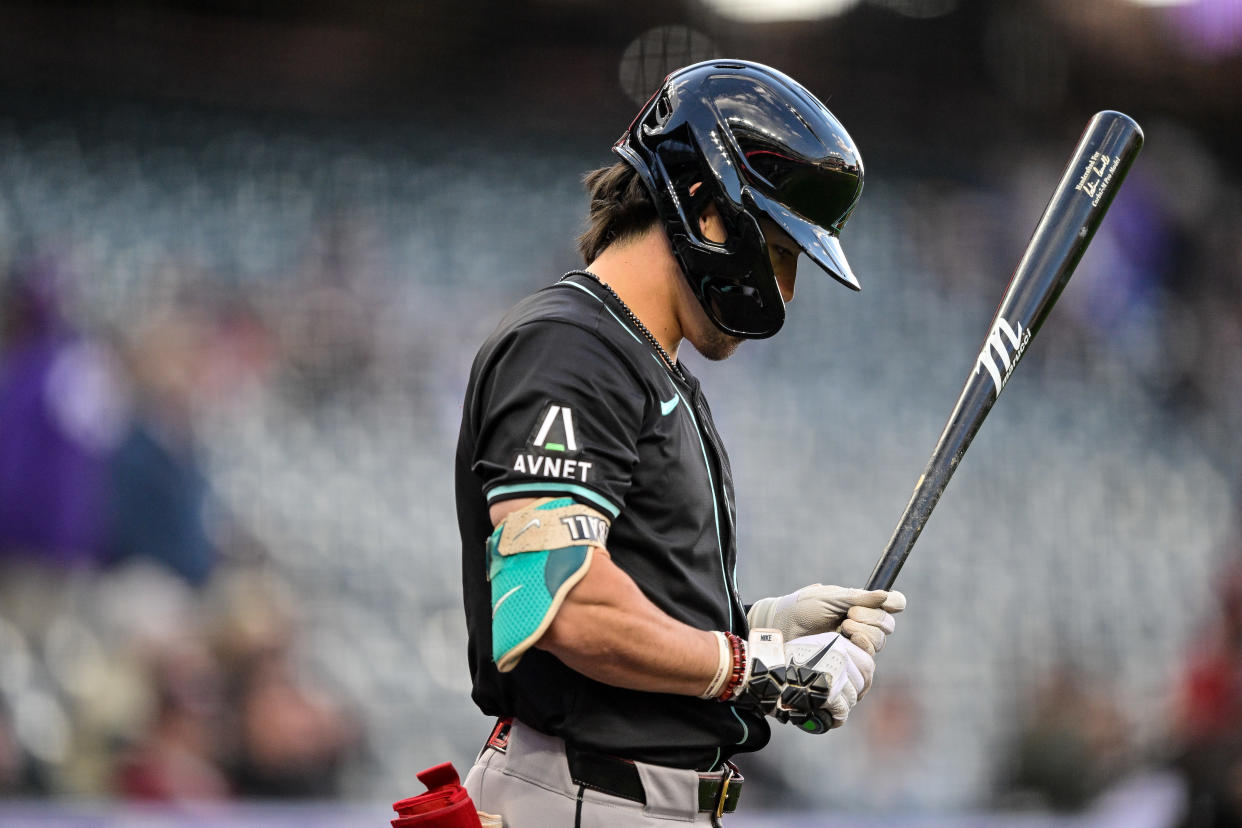Fantasy Baseball Trade Analyzer: It might be time to sell low on Corbin Carroll

Before we dive into specific players, I’d like to focus on a big-picture fantasy baseball trading concept that is essential to April trading.
At all points in the year, smart managers will combine their work on the trade market with potential opportunities on the waiver wire. Both areas are clearly essential to building a championship roster. And with an eye on using April trades to set up free-agent opportunities, managers should look to make 2-for-1 or 3-for-1 trades right now. Keep in mind that these trades are often the hardest to make. Many managers will be reluctant to give up the best player in the deal. But if the pot is sweetened enough, these deals are possible.
Making 2-for-1 deals is especially advantageous in April because it opens roster space to aggressively pursue waiver wire options. There are valuable free agents at all points in the season, but the most valuable long-term contributors are available during the initial two months. For example, top Orioles prospect Heston Kjerstad was recently promoted and managers who created roster room had the ability to pounce. And even with veteran players, this is the best time to grab those who are off to a hot start in hopes that they are at the outset of a career year.
When making 2-for-1 trades right now, you don’t need to win the deal. I'm fine taking a slight loss on such a trade because I believe in my ability to stream the newfound roster spot until someone special emerges. To be clear, 2-for-1 deals aren’t the only ones you should pursue right now, but they should be part of the plan in the coming weeks. Now, let’s check out a few names who could populate trade talks.
Buy Low
Jonathan India (2B, Cincinnati Reds)
Batting .174 with zero homers and a pair of steals, India’s value could be at an all-time low right now. It also doesn’t help that he has dealt with an illness for the past few days. But there are plenty of reasons to expect him to soon bounce back. The 27-year-old’s strikeout rate is in line with his usual marks, and his walk rate is the best of his four-year career. India has been plagued by a .226 BABIP, and his expected stats via Statcast are all much higher than his actual marks.
Finally, with all of his plate appearances coming from the leadoff spot, India has plenty of upside once he turns things around.
Sell High
Ezequiel Tovar (SS, Colorado Rockies)
Tovar managers can easily prepare an argument that he is at the outset of a breakout season. His .830 OPS is a major improvement over last year, and at age 22, he is at a stage in his career where rapid growth is possible. And of course, playing half of his games at hitter-friendly Coors Field makes the shortstop even easier to get behind. Unfortunately, the reality on Tovar is that his strikeout rate stinks, his walk rate stinks and although his batted-ball tendencies have improved slightly, they are nowhere near what would be needed to maintain his eye-popping .426 BABIP. Tovar should continue to play well enough to stay on most rosters, but he is not an impact player.
Buy High
Gunnar Henderson (3B/SS, Baltimore Orioles)
In short, everything Henderson is doing right now is sustainable. The 22-year-old is hitting .287 with seven homers and four steals, without the benefit of a high BABIP (.317) or a ridiculous HR/FB rate (24%). In fact, Statcast has assigned Henderson a .294 xBA which is slightly higher than his actual mark. As the table setter for a dynamic Orioles lineup, he is a virtual lock to score 100 runs. And the quality of his teammates should only go up as the season progresses since Baltimore has so many potential stars toiling in Triple-A. Henderson won’t be cheap in trade talks, but he is the type of player I would target when making an aggressive 2-for-1 or 3-for-1 offer.
Sell Low
Corbin Carroll (OF, Arizona Diamondbacks)
I make this recommendation with some trepidation, as I am well aware of how valuable Carroll could be when he heats up. After all, I predicted during spring training that the 23-year-old would lead the majors in steals this year. But beyond his fleet feet, something seems off with this lineup spark plug. Carroll is struggling to provide any power, as is evidenced by his one home run and 83.6 mph average exit velocity. And this power outage comes on the heels of the same issue existing during the second half of last season when he hit just seven homers in 257 at-bats.
The guess here is that Carroll eventually brings his average into the .265 range (he’s currently batting .215) but falls well short of 20 home runs. To be clear, I wouldn’t trade Carroll away at a massive discount, but I would be willing to entertain swapping him for someone who was selected 10 picks later and is off to a good start.
One final comment: I’m not interested in trading Carroll for two average players. That’s the exact type of deal that I don’t want right now.
